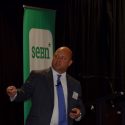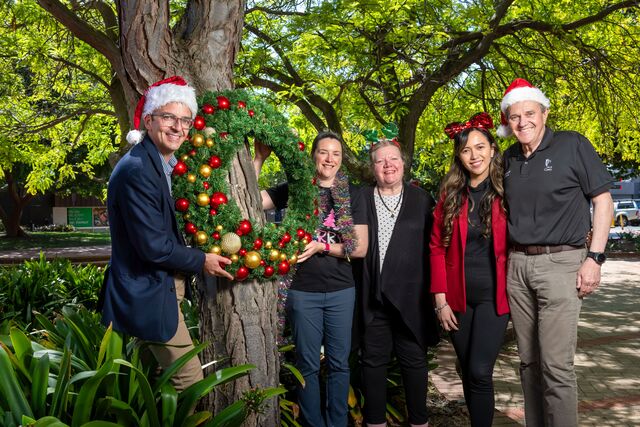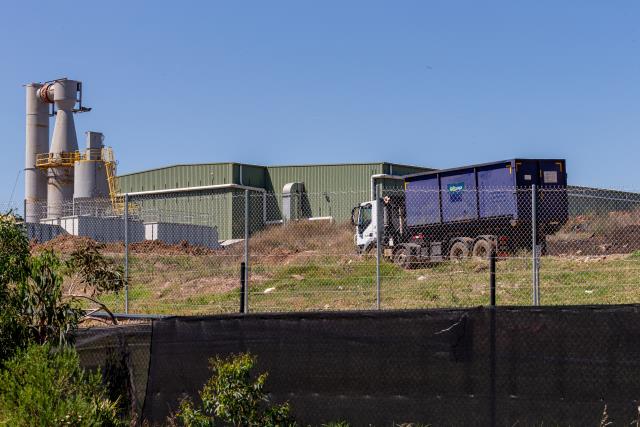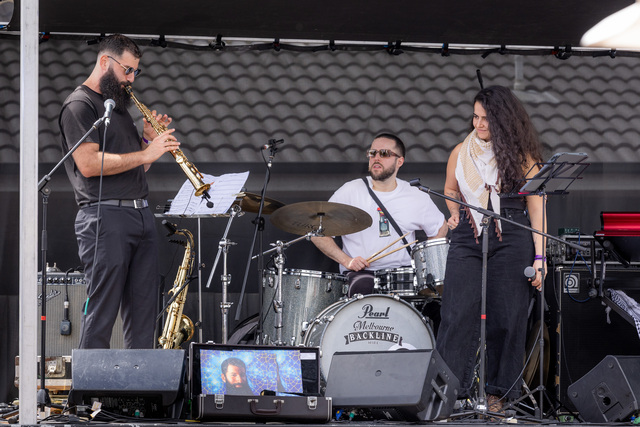By Casey Neill
Boeing could be a lifeline for ex-auto workers and suppliers in the South-East.
Boeing Aerostructures Australia managing director Mike Bunker was a guest speaker at the SEBN Christmas Industry Breakfast at Sandown Racecourse in Springvale on Thursday 14 December.
Guests also heard from strategic futurist Dr Anita Sykes-Kelleher, Cornerstone Contact Centre’s Stephen Barrington on behalf of next year’s Take a Swing for Charity golf day recipients, and made donations to buy presents and food hampers for those in need.
“Who doesn’t love airplanes?” Mr Bunker said after showing a short film featuring a range of Boeing aircraft.
“We build really important parts in Victoria for every airplane you saw in that video.
“We make the flappy parts.
“Some of these products are 10 metres or more in length.”
The flaps are shipped to Charleston or Seattle in the US and bolted onto a plane.
They’re made at a factory in Melbourne’s Fishermans Bend.
“We’re building the 787 Dreamliner with robots in the hanger we used to build the bombers for World War II,” Mr Bunker said.
Boeing has more than 3000 employees in Australia, and 1500 suppliers.
“Our objective is to get at least 80 per cent of what we buy here locally,” Mr Bunker said.
“We are aggressive in looking for new suppliers all the time.
“Suppliers need to be more aggressive in asking for opportunities.
“If you want part of the business, ask us what it takes.
In Melbourne, Boeing has scientists, engineers and manufacturing under one roof.
“We can try things there in that smaller environment of 1100 people,” he said.
“The company uses us to that advantage.”
He said Australia’s research and development line was the largest outside of the US.
The 250 engineers on-site in Melbourne are “doing design work even for parts we don’t make here”.
“As auto manufacturing goes down, they’re people that we’d love to get into our business,” Mr Bunker said.
Dr Sykes-Kelleher spoke about future-fit leaders, who will be very different to today’s leaders.
“Growth isn’t what it used to be. Business assumptions are being challenged daily,” she said.
“The future doesn’t develop in a predictable, linear way.”
Dr Sykes-Kelleher said future-fit leaders needed to anticipate change and use foresight in decisions.
They need to inspire purpose and deeper employee engagement, think about ecosystems – “everything is connected to everything else” – and bring the best talent together to solve the worse problems.
This could involve bringing different perspectives to the table.
“How would an artist tackle an engineering problem?” she asked.







